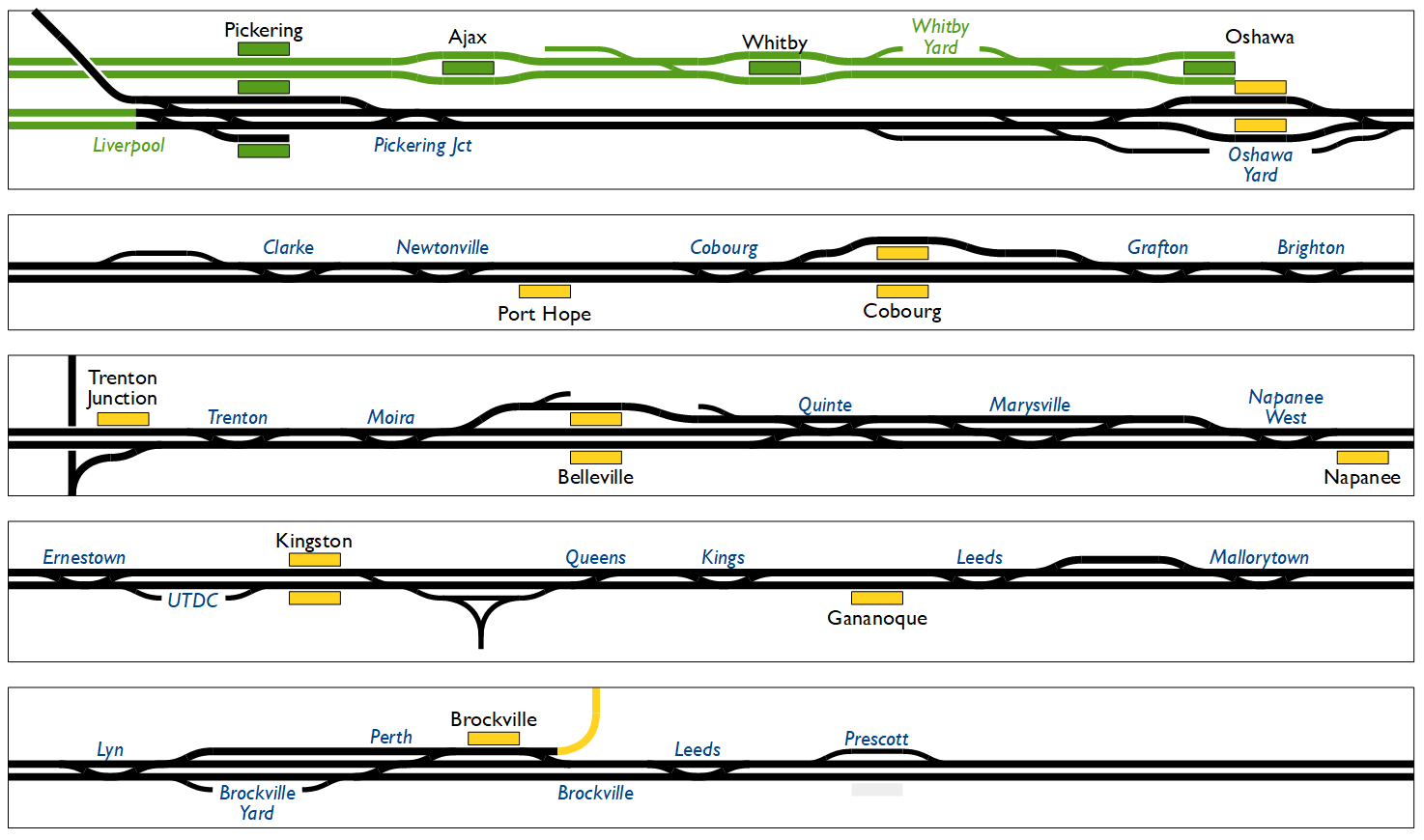My anecdotal experience is that riders at those stations (Napanee/Trenton) aren't taking the train to commute for work - they're taking the train to visit Toronto or to go further elsewhere. I'm not convinced they're taking the train return the same day. The largest groups on the Ottawa-Toronto trains are::
Ottawa <-> Toronto group (typically Car 5 and business)
Kingston <-> Toronto students (typically Car 3 or 4)
Ottawa <-> Kingston folks
Belleville <-> Toronto travellers
Toronto commuters Cobourg-wes, especially from Oshawa
Occasionally you'll get Belleville <-> Kingston or Gananoque <-> Brockville riders but they're pretty rare. The vast majority of riders are using Toronto, Belleville, Kingston, and Ottawa stations. The in-betweens can be served as needed.





